Xiaoyu Wang
Liaoning Cancer Hospital and Institute, Shenyang, China
Dream to Chat: Model-based Reinforcement Learning on Dialogues with User Belief Modeling
Aug 23, 2025Abstract:World models have been widely utilized in robotics, gaming, and auto-driving. However, their applications on natural language tasks are relatively limited. In this paper, we construct the dialogue world model, which could predict the user's emotion, sentiment, and intention, and future utterances. By defining a POMDP, we argue emotion, sentiment and intention can be modeled as the user belief and solved by maximizing the information bottleneck. By this user belief modeling, we apply the model-based reinforcement learning framework to the dialogue system, and propose a framework called DreamCUB. Experiments show that the pretrained dialogue world model can achieve state-of-the-art performances on emotion classification and sentiment identification, while dialogue quality is also enhanced by joint training of the policy, critic and dialogue world model. Further analysis shows that this manner holds a reasonable exploration-exploitation balance and also transfers well to out-of-domain scenarios such as empathetic dialogues.
CliCARE: Grounding Large Language Models in Clinical Guidelines for Decision Support over Longitudinal Cancer Electronic Health Records
Jul 30, 2025Abstract:Large Language Models (LLMs) hold significant promise for improving clinical decision support and reducing physician burnout by synthesizing complex, longitudinal cancer Electronic Health Records (EHRs). However, their implementation in this critical field faces three primary challenges: the inability to effectively process the extensive length and multilingual nature of patient records for accurate temporal analysis; a heightened risk of clinical hallucination, as conventional grounding techniques such as Retrieval-Augmented Generation (RAG) do not adequately incorporate process-oriented clinical guidelines; and unreliable evaluation metrics that hinder the validation of AI systems in oncology. To address these issues, we propose CliCARE, a framework for Grounding Large Language Models in Clinical Guidelines for Decision Support over Longitudinal Cancer Electronic Health Records. The framework operates by transforming unstructured, longitudinal EHRs into patient-specific Temporal Knowledge Graphs (TKGs) to capture long-range dependencies, and then grounding the decision support process by aligning these real-world patient trajectories with a normative guideline knowledge graph. This approach provides oncologists with evidence-grounded decision support by generating a high-fidelity clinical summary and an actionable recommendation. We validated our framework using large-scale, longitudinal data from a private Chinese cancer dataset and the public English MIMIC-IV dataset. In these diverse settings, CliCARE significantly outperforms strong baselines, including leading long-context LLMs and Knowledge Graph-enhanced RAG methods. The clinical validity of our results is supported by a robust evaluation protocol, which demonstrates a high correlation with assessments made by expert oncologists.
A Deep Learning Pipeline Using Synthetic Data to Improve Interpretation of Paper ECG Images
Jul 29, 2025Abstract:Cardiovascular diseases (CVDs) are the leading global cause of death, and early detection is essential to improve patient outcomes. Electrocardiograms (ECGs), especially 12-lead ECGs, play a key role in the identification of CVDs. These are routinely interpreted by human experts, a process that is time-consuming and requires expert knowledge. Historical research in this area has focused on automatic ECG interpretation from digital signals, with recent deep learning approaches achieving strong results. In practice, however, most ECG data in clinical practice are stored or shared in image form. To bridge this gap, we propose a deep learning framework designed specifically to classify paper-like ECG images into five main diagnostic categories. Our method was the winning entry to the 2024 British Heart Foundation Open Data Science Challenge. It addresses two main challenges of paper ECG classification: visual noise (e.g., shadows or creases) and the need to detect fine-detailed waveform patterns. We propose a pre-processing pipeline that reduces visual noise and a two-stage fine-tuning strategy: the model is first fine-tuned on synthetic and external ECG image datasets to learn domain-specific features, and then further fine-tuned on the target dataset to enhance disease-specific recognition. We adopt the ConvNeXt architecture as the backbone of our model. Our method achieved AUROC scores of 0.9688 on the public validation set and 0.9677 on the private test set of the British Heart Foundation Open Data Science Challenge, highlighting its potential as a practical tool for automated ECG interpretation in clinical workflows.
4KAgent: Agentic Any Image to 4K Super-Resolution
Jul 09, 2025Abstract:We present 4KAgent, a unified agentic super-resolution generalist system designed to universally upscale any image to 4K resolution (and even higher, if applied iteratively). Our system can transform images from extremely low resolutions with severe degradations, for example, highly distorted inputs at 256x256, into crystal-clear, photorealistic 4K outputs. 4KAgent comprises three core components: (1) Profiling, a module that customizes the 4KAgent pipeline based on bespoke use cases; (2) A Perception Agent, which leverages vision-language models alongside image quality assessment experts to analyze the input image and make a tailored restoration plan; and (3) A Restoration Agent, which executes the plan, following a recursive execution-reflection paradigm, guided by a quality-driven mixture-of-expert policy to select the optimal output for each step. Additionally, 4KAgent embeds a specialized face restoration pipeline, significantly enhancing facial details in portrait and selfie photos. We rigorously evaluate our 4KAgent across 11 distinct task categories encompassing a total of 26 diverse benchmarks, setting new state-of-the-art on a broad spectrum of imaging domains. Our evaluations cover natural images, portrait photos, AI-generated content, satellite imagery, fluorescence microscopy, and medical imaging like fundoscopy, ultrasound, and X-ray, demonstrating superior performance in terms of both perceptual (e.g., NIQE, MUSIQ) and fidelity (e.g., PSNR) metrics. By establishing a novel agentic paradigm for low-level vision tasks, we aim to catalyze broader interest and innovation within vision-centric autonomous agents across diverse research communities. We will release all the code, models, and results at: https://4kagent.github.io.
Accelerating Constrained Sampling: A Large Deviations Approach
Jun 09, 2025Abstract:The problem of sampling a target probability distribution on a constrained domain arises in many applications including machine learning. For constrained sampling, various Langevin algorithms such as projected Langevin Monte Carlo (PLMC) based on the discretization of reflected Langevin dynamics (RLD) and more generally skew-reflected non-reversible Langevin Monte Carlo (SRNLMC) based on the discretization of skew-reflected non-reversible Langevin dynamics (SRNLD) have been proposed and studied in the literature. This work focuses on the long-time behavior of SRNLD, where a skew-symmetric matrix is added to RLD. Although the non-asymptotic convergence analysis for SRNLD (and SRNLMC) and the acceleration compared to RLD (and PMLC) have been studied in the literature, it is not clear how one should design the skew-symmetric matrix in the dynamics to achieve good performance in practice. We establish a large deviation principle (LDP) for the empirical measure of SRNLD when the skew-symmetric matrix is chosen such that its product with the inward unit normal vector field on the boundary is zero. By explicitly characterizing the rate functions, we show that SRNLD can accelerate the convergence to the target distribution compared to RLD with this choice of the skew-symmetric matrix. Numerical experiments for SRNLMC based on the proposed skew-symmetric matrix show superior performance which validate the theoretical findings from the large deviations theory.
Reflect-then-Plan: Offline Model-Based Planning through a Doubly Bayesian Lens
Jun 06, 2025Abstract:Offline reinforcement learning (RL) is crucial when online exploration is costly or unsafe but often struggles with high epistemic uncertainty due to limited data. Existing methods rely on fixed conservative policies, restricting adaptivity and generalization. To address this, we propose Reflect-then-Plan (RefPlan), a novel doubly Bayesian offline model-based (MB) planning approach. RefPlan unifies uncertainty modeling and MB planning by recasting planning as Bayesian posterior estimation. At deployment, it updates a belief over environment dynamics using real-time observations, incorporating uncertainty into MB planning via marginalization. Empirical results on standard benchmarks show that RefPlan significantly improves the performance of conservative offline RL policies. In particular, RefPlan maintains robust performance under high epistemic uncertainty and limited data, while demonstrating resilience to changing environment dynamics, improving the flexibility, generalizability, and robustness of offline-learned policies.
DenseLoRA: Dense Low-Rank Adaptation of Large Language Models
May 27, 2025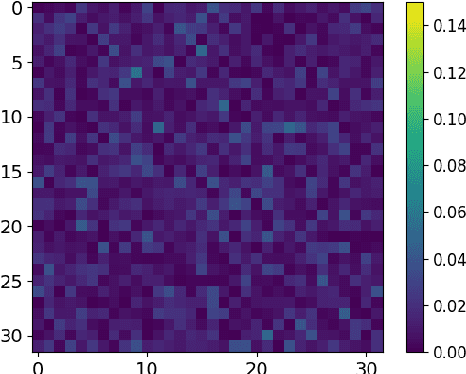
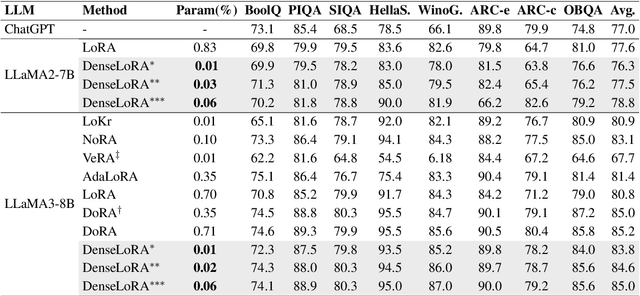
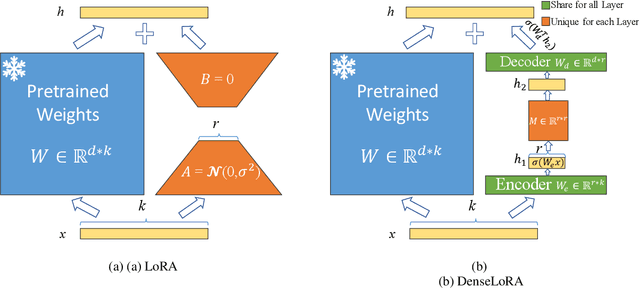

Abstract:Low-rank adaptation (LoRA) has been developed as an efficient approach for adapting large language models (LLMs) by fine-tuning two low-rank matrices, thereby reducing the number of trainable parameters. However, prior research indicates that many of the weights in these matrices are redundant, leading to inefficiencies in parameter utilization. To address this limitation, we introduce Dense Low-Rank Adaptation (DenseLoRA), a novel approach that enhances parameter efficiency while achieving superior performance compared to LoRA. DenseLoRA builds upon the concept of representation fine-tuning, incorporating a single Encoder-Decoder to refine and compress hidden representations across all adaptation layers before applying adaptation. Instead of relying on two redundant low-rank matrices as in LoRA, DenseLoRA adapts LLMs through a dense low-rank matrix, improving parameter utilization and adaptation efficiency. We evaluate DenseLoRA on various benchmarks, showing that it achieves 83.8% accuracy with only 0.01% of trainable parameters, compared to LoRA's 80.8% accuracy with 0.70% of trainable parameters on LLaMA3-8B. Additionally, we conduct extensive experiments to systematically assess the impact of DenseLoRA's components on overall model performance. Code is available at https://github.com/mulin-ahu/DenseLoRA.
Convert Language Model into a Value-based Strategic Planner
May 11, 2025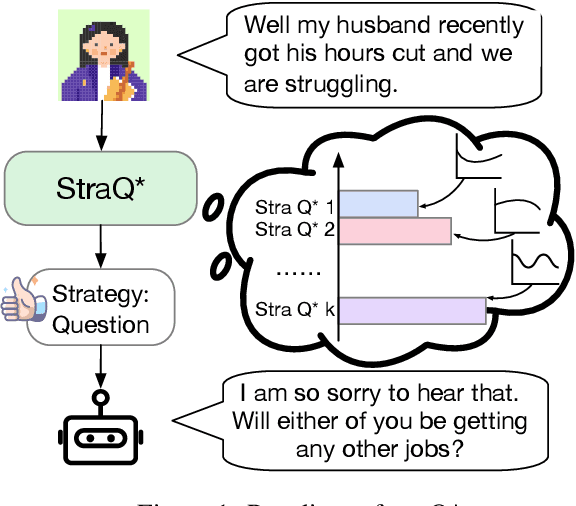
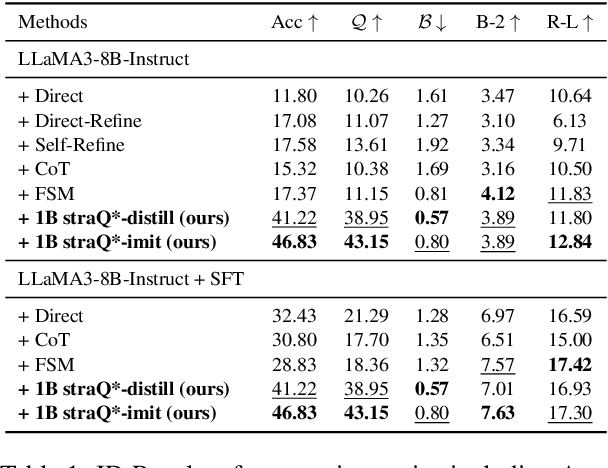
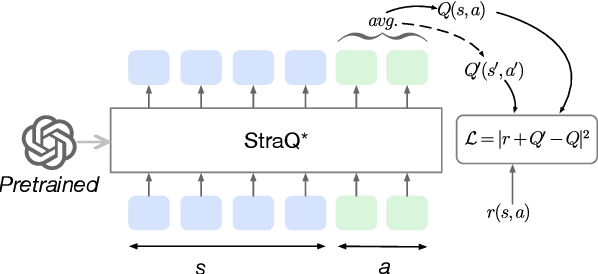
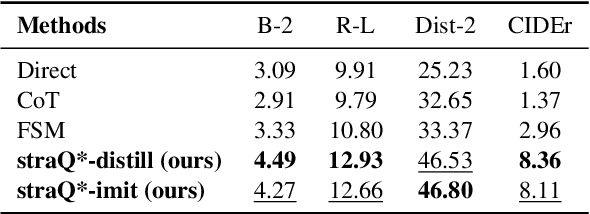
Abstract:Emotional support conversation (ESC) aims to alleviate the emotional distress of individuals through effective conversations. Although large language models (LLMs) have obtained remarkable progress on ESC, most of these studies might not define the diagram from the state model perspective, therefore providing a suboptimal solution for long-term satisfaction. To address such an issue, we leverage the Q-learning on LLMs, and propose a framework called straQ*. Our framework allows a plug-and-play LLM to bootstrap the planning during ESC, determine the optimal strategy based on long-term returns, and finally guide the LLM to response. Substantial experiments on ESC datasets suggest that straQ* outperforms many baselines, including direct inference, self-refine, chain of thought, finetuning, and finite state machines.
Collaborative Perception Datasets for Autonomous Driving: A Review
Apr 17, 2025



Abstract:Collaborative perception has attracted growing interest from academia and industry due to its potential to enhance perception accuracy, safety, and robustness in autonomous driving through multi-agent information fusion. With the advancement of Vehicle-to-Everything (V2X) communication, numerous collaborative perception datasets have emerged, varying in cooperation paradigms, sensor configurations, data sources, and application scenarios. However, the absence of systematic summarization and comparative analysis hinders effective resource utilization and standardization of model evaluation. As the first comprehensive review focused on collaborative perception datasets, this work reviews and compares existing resources from a multi-dimensional perspective. We categorize datasets based on cooperation paradigms, examine their data sources and scenarios, and analyze sensor modalities and supported tasks. A detailed comparative analysis is conducted across multiple dimensions. We also outline key challenges and future directions, including dataset scalability, diversity, domain adaptation, standardization, privacy, and the integration of large language models. To support ongoing research, we provide a continuously updated online repository of collaborative perception datasets and related literature: https://github.com/frankwnb/Collaborative-Perception-Datasets-for-Autonomous-Driving.
FiSMiness: A Finite State Machine Based Paradigm for Emotional Support Conversations
Apr 16, 2025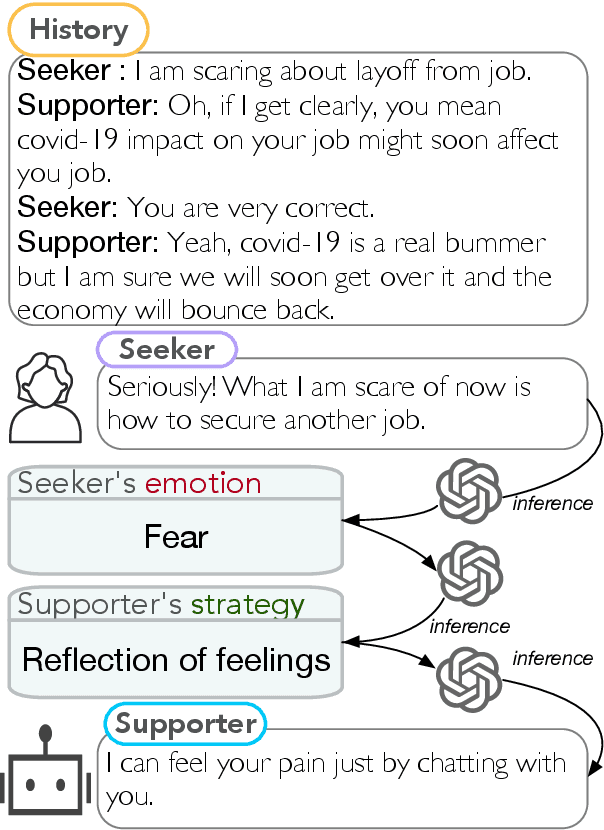

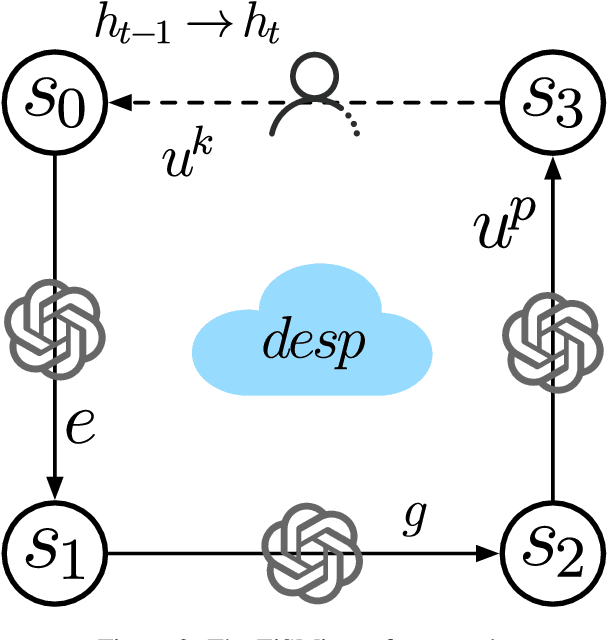
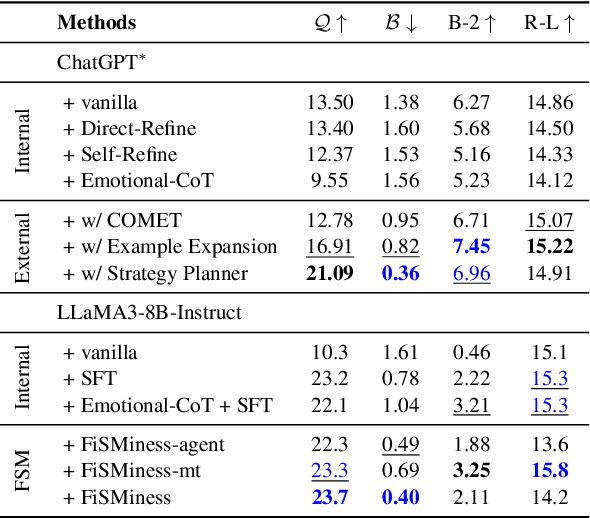
Abstract:Emotional support conversation (ESC) aims to alleviate the emotional distress of individuals through effective conversations. Although large language models (LLMs) have obtained remarkable progress on ESC, most of these studies might not define the diagram from the state model perspective, therefore providing a suboptimal solution for long-term satisfaction. To address such an issue, we leverage the Finite State Machine (FSM) on LLMs, and propose a framework called FiSMiness. Our framework allows a single LLM to bootstrap the planning during ESC, and self-reason the seeker's emotion, support strategy and the final response upon each conversational turn. Substantial experiments on ESC datasets suggest that FiSMiness outperforms many baselines, including direct inference, self-refine, chain of thought, finetuning, and external-assisted methods, even those with many more parameters.
 Add to Chrome
Add to Chrome Add to Firefox
Add to Firefox Add to Edge
Add to Edge